When Dave and Lynn Kirkpatrick moved into their new home in Northville, Michigan in 2000 with its oversized wooded lot, they immediately added junipers, hostas and daylilies, earning a subdivision gardening award.
This is an excerpt from the Wild Ones Journal
Current members can log in to read the latest issue or check out the Journal Archives.
But about six months later, Lynn met a Wild Ones member who inspired her to landscape with native plants. And they immediately started transforming their property into a natural paradise.
“As a botanist, I had studied native plants, but I had never considered using them in the landscape because they were not available at typical nurseries,” Lynn recalls. “The entire backyard became my first test garden, with plenty of trial and error.”
One thing she quickly learned: Know a plant’s habits before you plant it, or else you’ll end up with plants out of control.
More than 23 years later, the Kirkpatricks are still experimenting. Their 1.5-acre property has heavy clay soil. Water management is challenging since they’re located at the lowest point in the subdivision.
Lynn says about 75% of their property is now native.
“The other half used to be a suburban mess,” she says, since they had too much lawn and invasives like reed canary grass (Phalaris arundinacea) and common buckthorn (Rhamnus cathartica). “Over the years we have reduced the lawn size and added native gardens. Many areas rebounded on their own after removing the invasives.”
It’s been a slow, but steady process, all done by them.
“The gardens have been added section by section,” she said. “Each season, we added an area of native plants while removing lawn by digging or smothering with woodchips.”
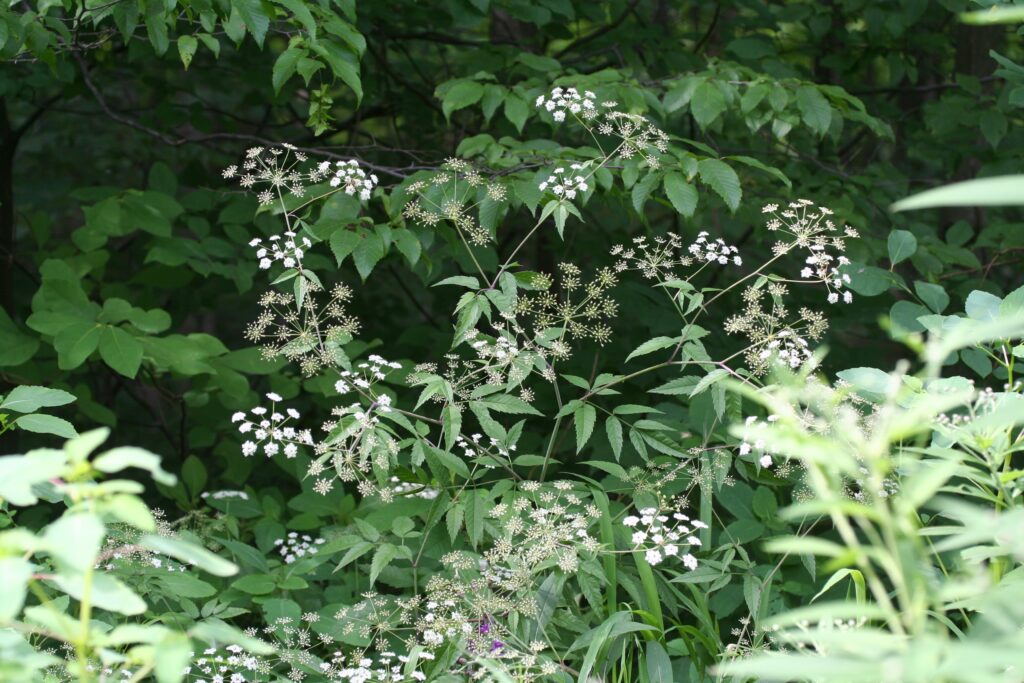
is extremely poisonous if eaten so it’s kept away from the path edges.
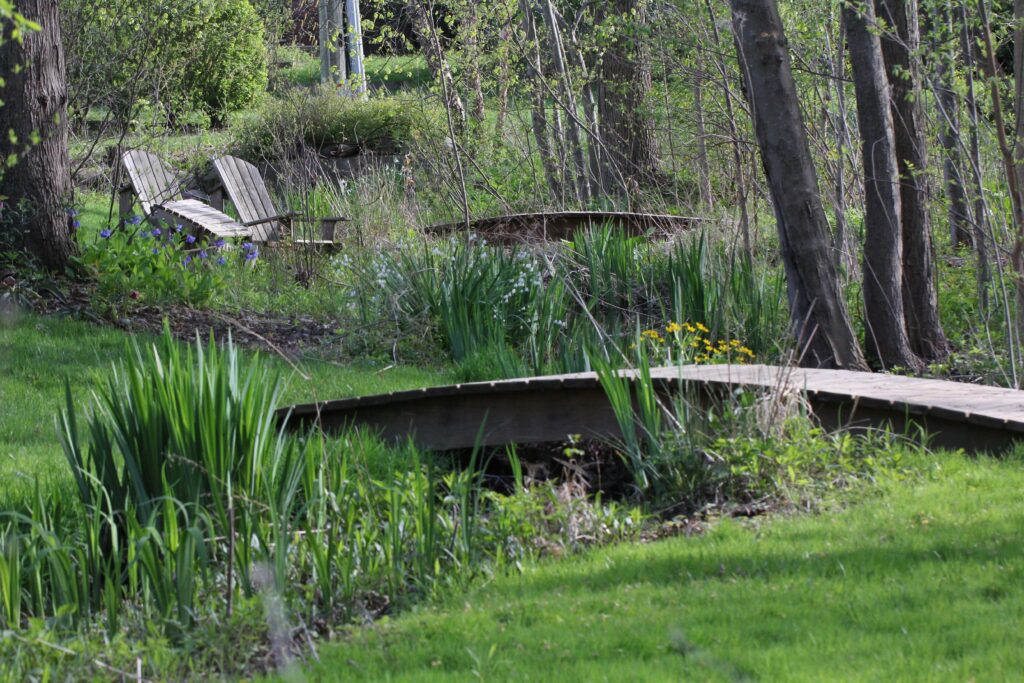
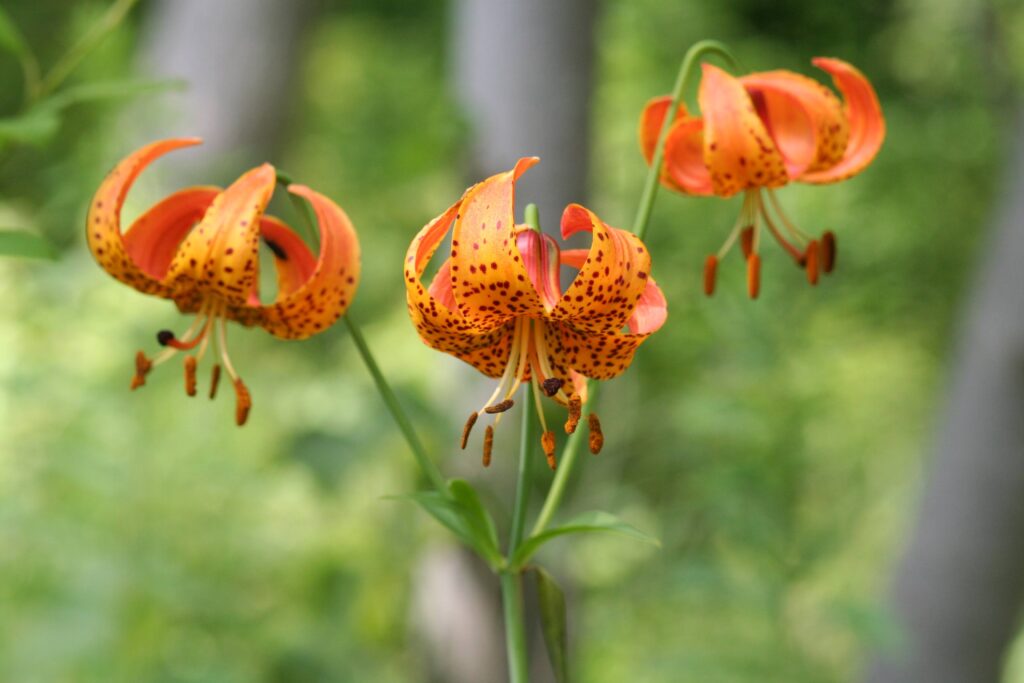
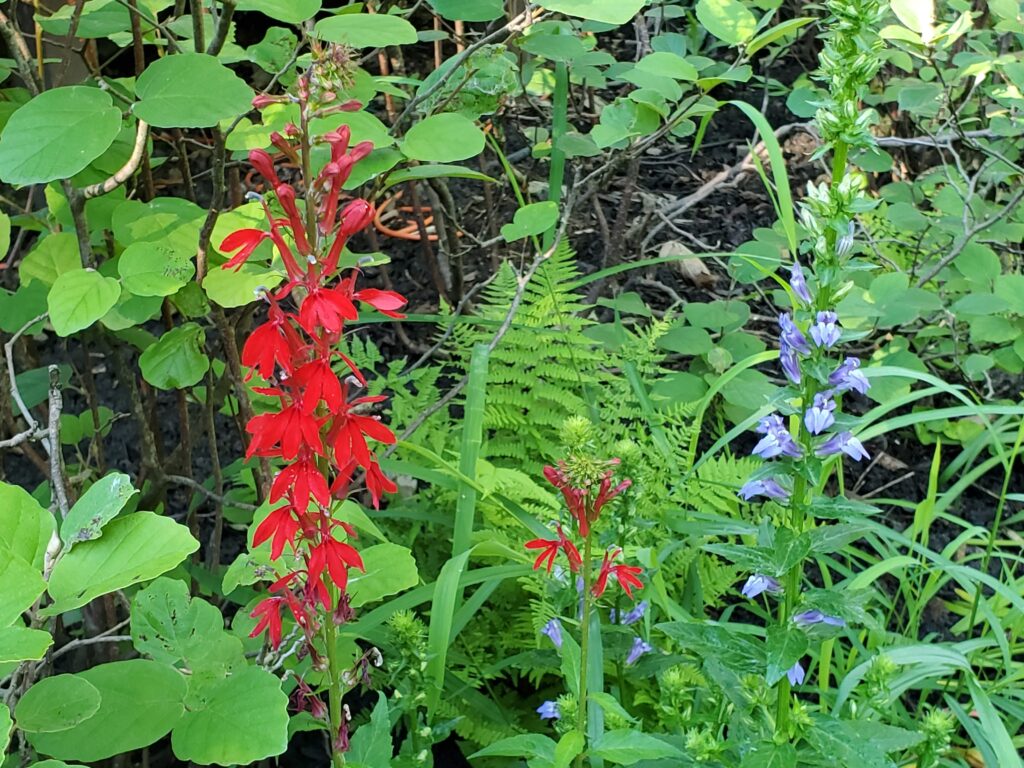
They created most gardens to mitigate problems. For instance, they have four gardens to help guide rain and sump water, and their bridges, boardwalks and flagstone pathways evolved as they learned from earlier designs.
In most years, they purchased plugs from a local native plant nursery. But Lynn also collects seeds to plant.
They installed an arid garden in their front yard where grass struggled because water rarely reached it. Now New Jersey tea (Ceanothus americanus), lance-leaved coreopsis (Coreopsis lanceolata), horsemint (Monarda punctata), butterfly weed (Asclepiastuberosa) and pearly everlasting (Anaphalis margaritacea) thrive.
During the pandemic quarantine, the two eagerly took on some challenges.
“Dave built a beautiful 50-foot, curving boardwalk extension on fence posts pounded deep into the mud,” Lynn says. “In another area, I dug into the clay to create a natural pond, extended a sump pump rain garden to feed it and added another rain garden for the overflow. Frogs took to the pond immediately!”
She adds that both projects were very hard physically, but extremely satisfying.
Lynn is proud that their yard is one of the largest and most interesting in their neighborhood.
“The beech-maple-hickory forest takes care of itself, flushing with spring beauty (Claytonia virginica), yellow trout lily (Erythronium americanum), squirrel-corn (Dicentra canadensis), nodding trillium (Trillium cernuum), broadleaf waterleaf (Hydrophyllum canadense) and then giving way to a beautiful fall color display.
They created a woodchip trail lined with fallen tree branches to enjoy, and not step on, the woodland flowers.
A former ditch that is now a small creek runs across the middle and lowest stretch of their backyard, fed by the entire subdivision uphill from them.
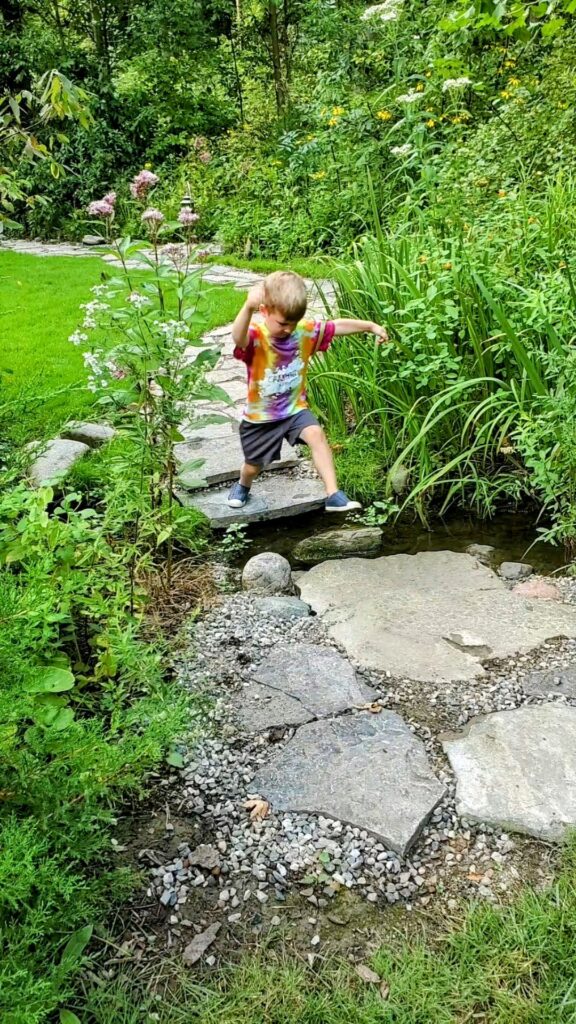
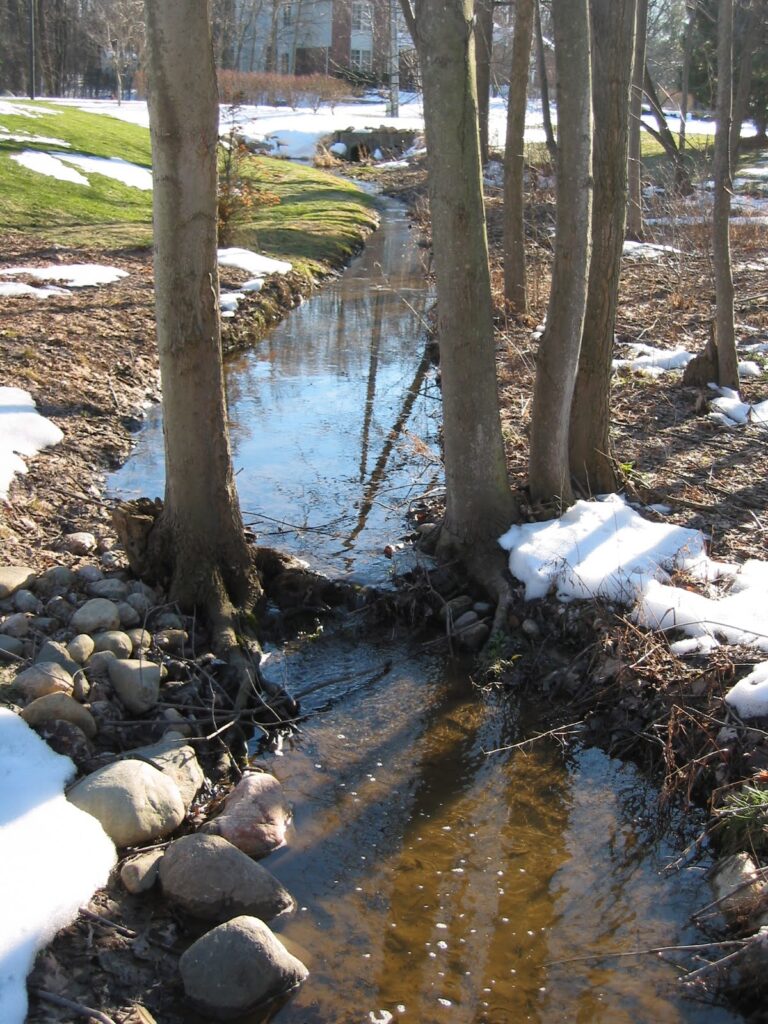
“After watching our new creekside woodchip paths float away, we realized that it would flood again – a few times per year,” Lynn says, adding that water flow can go from 2 to 70-feet wide. “We have been adding raised boardwalks and flagstone pathways to allow the water to flow naturally and keep us out of the mud. Additional native plantings, instead of lawn up to the edges, help prevent erosion, add color, texture and provide shelter for many frogs.”
Besides frogs, they’ve seen substantial increases in pollinators, birds and wildlife.
“We have a game cam that has captured some surprising animals, especially at night,” Lynn says. “Along with the expected deer and squirrels, there have been raccoons, foxes, coyotes, mink, stray cats, opossums, turkeys, hawks, ducks and even geese herding their 15 goslings through the yard.”
In addition, one January day five deer were resting in the snowy woods while 11 turkeys kicked up leaves looking for food. This January, 12 deer were resting on their property.
One of the saddest years was 2003, when they lost 30 green ash trees to Emerald Ash Borer. “Our favorite was 105 years old, and three others were 82,” Lynn says. “What was once nice shade was then mostly sunny.”
The loss of the trees also impacted the water table since those trees no longer pulled up hundreds of gallons of water daily. “The increased sunlight and moisture created a wonderful germination bed where, it seemed, everything sprouted and overwhelmed many areas,” Lynn said, “including an idyllic ‘fern grotto’.”
Invasive reed canary grass (Phalaris arundinacea) dominated the area, so she knocked back 90% of it by timely herbicide treatment in early spring before other plants emerged.
A willow-herb appeared in the floodplain a few years ago with pink flowers on stalks 3-4-feet tall. “I was quite disappointed to find out it was hairy willow-herb (Epilobium hirsutum), an invasive that can become as bad as purple loosestrife (Lythrum salicaria),” she said. “I dug it out immediately and found spreading rhizomes reaching 5 feet.”
Swamp rose (Rosa palustris) is a plant she does not recommend, even though it is native. “Arching branches form a very dense, prickly thicket that has relatively few flowers,” she said. “Wildlife loves it for hiding, nesting and food, but it increases too quickly and is extremely difficult to trim back due to the painful thorny prickles.”
For those new to native landscaping, Lynn recommends they take time to observe the property’s conditions, particularly if they just moved there. Secondly, find a good local native plant source, and be hesitant in putting in plant “giveaways,” unless you trust the source. And thirdly, if you plan to add trees to your landscape, plant them now because they take so long to mature.
Even though it has been over two decades, Lynn says she’s not done tinkering with her yard. Their next projects call for planting more shrubs to create better backdrops and building an additional elevated boardwalk on the right side of the yard. “I’m also thinking of expanding the pond, just because I like it so much.”
Lynn says they enjoy watching the yard change throughout the year. “So many people have such a static yard,” she says. “But ours is very dynamic and we love that.”
Written by Barbara A. Schmitz.

